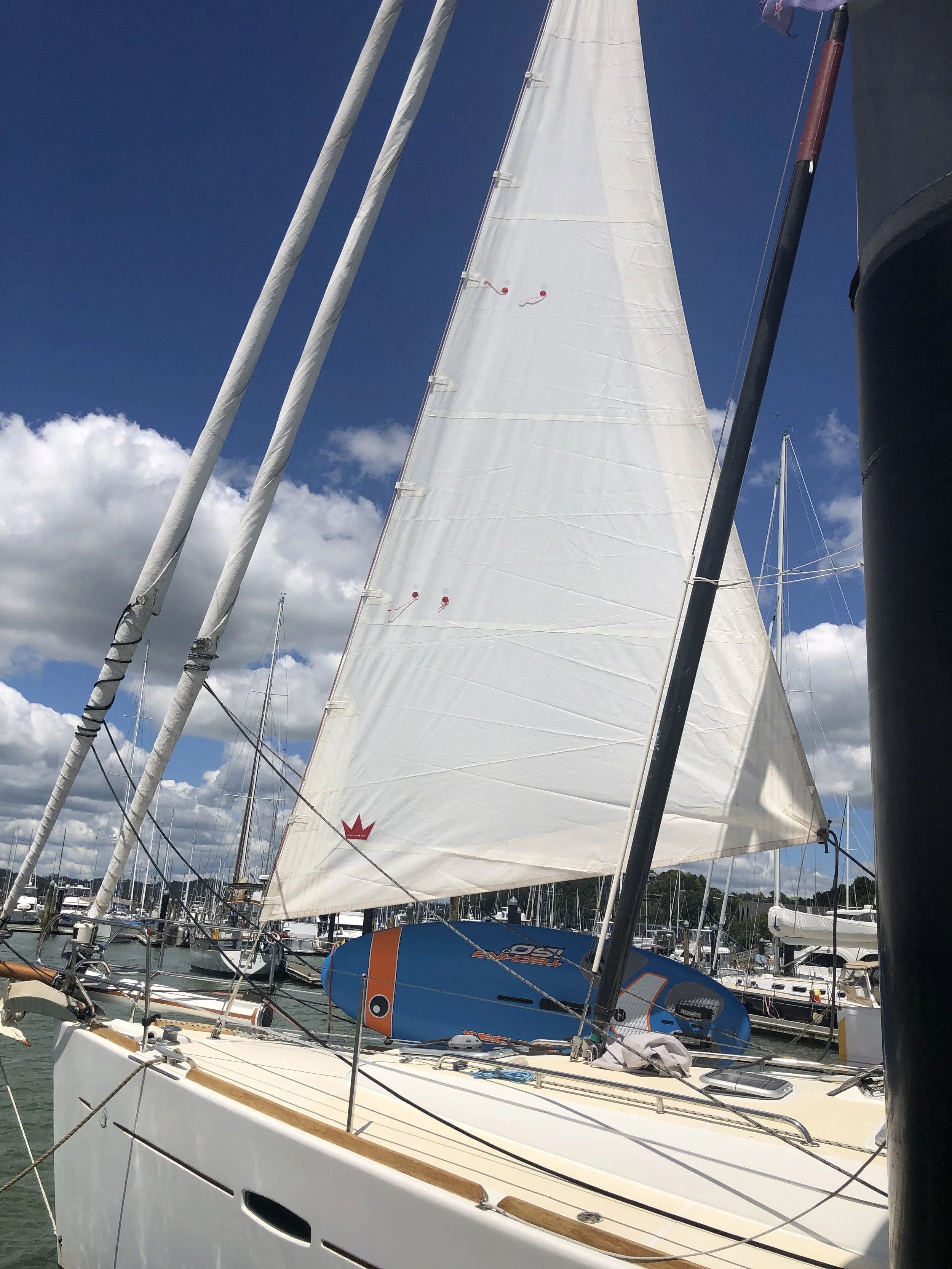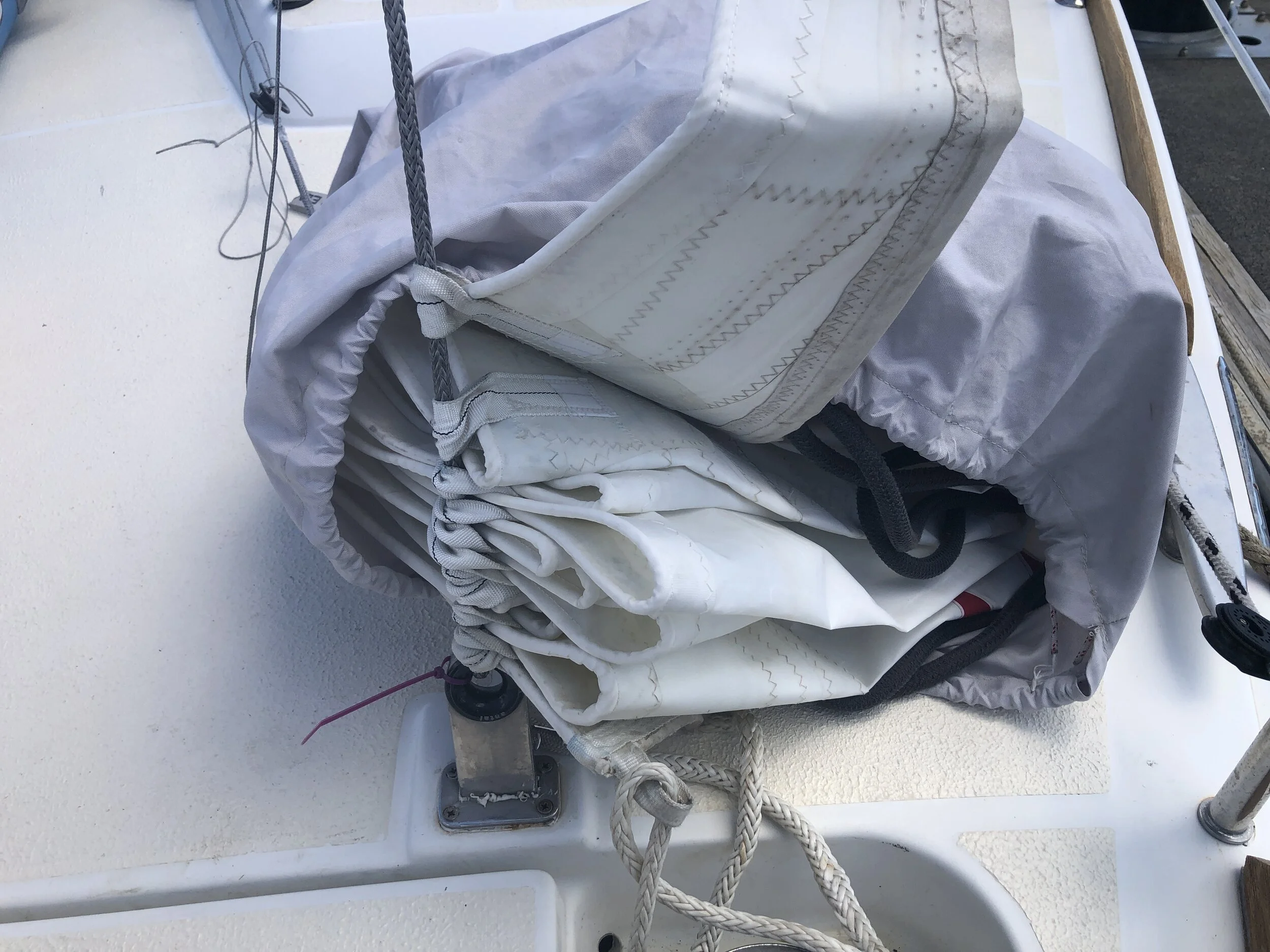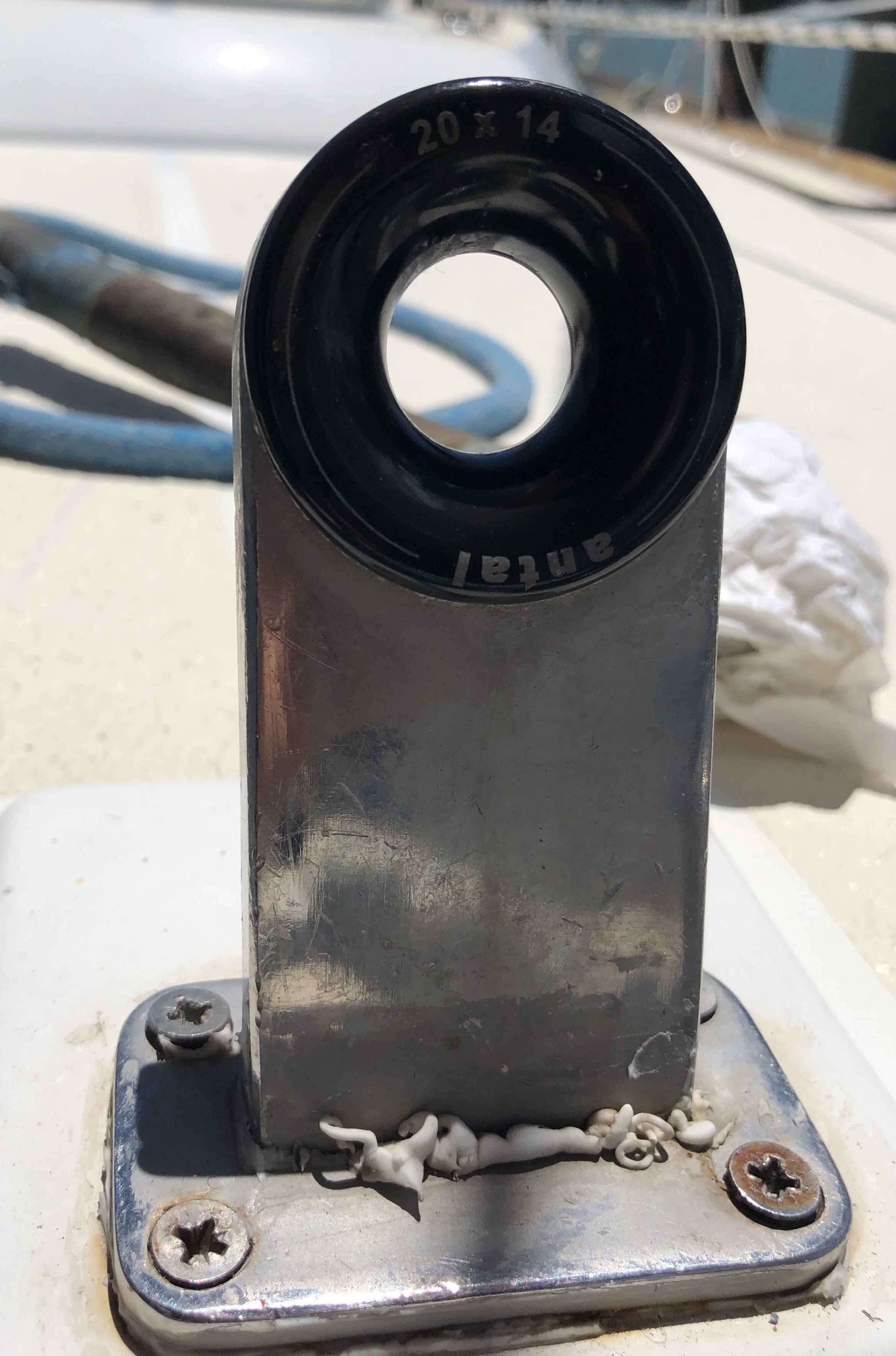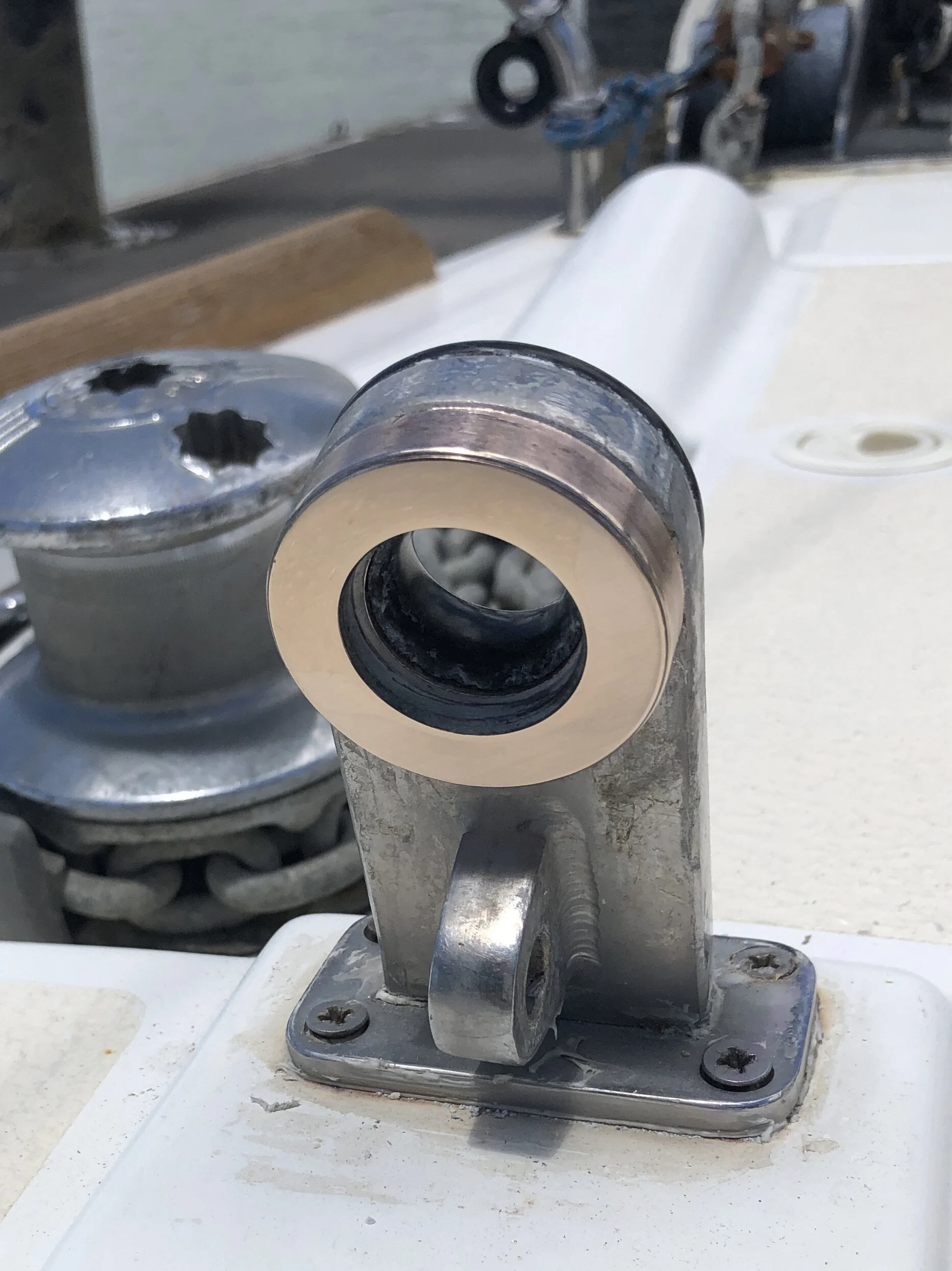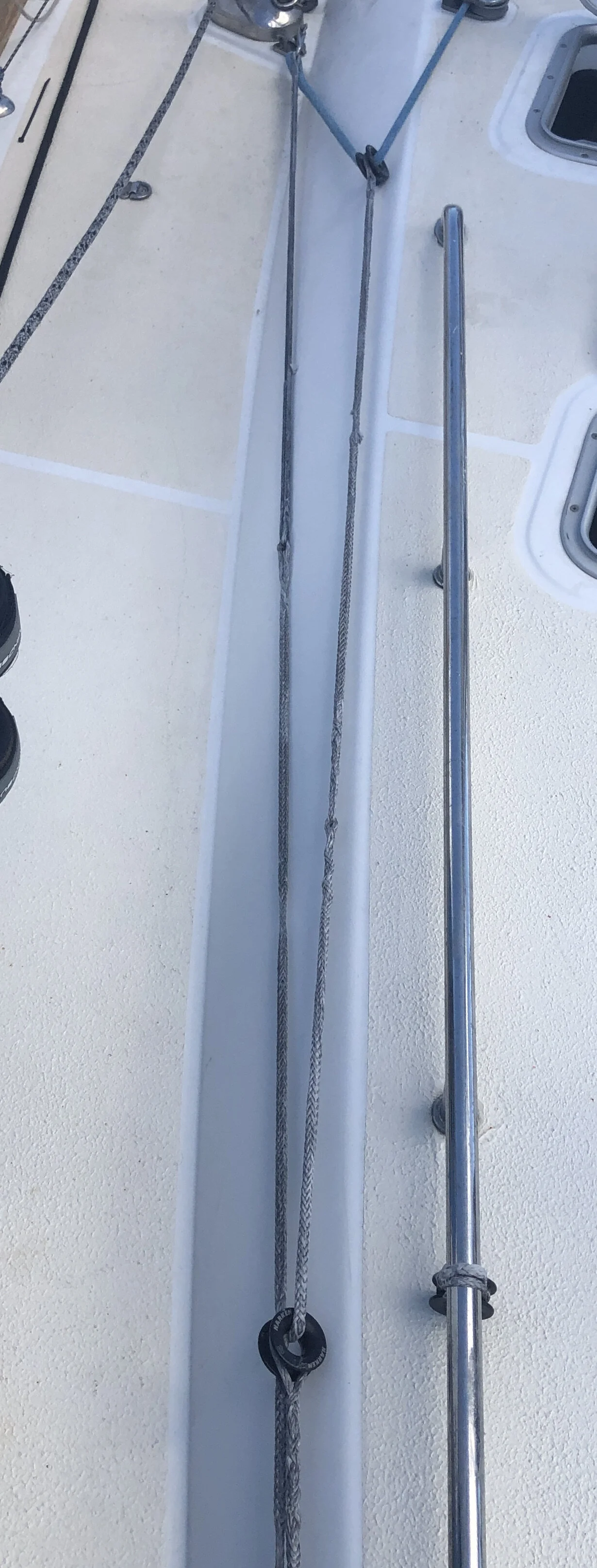STAYSAIL: SOFT HANKS ON REMOVABLE DYNEEMA STAY
Why WE ADDED a Staysail
Despite our #3 allowing us to to upwind in 30-35 knots we are an offshore cruising boat, often out long enough that we can encounter conditions not forecast prior to leaving port. Our sail plan has to cover the possibility of conditions we would prefer to avoid!
Sail has webbing loops in lieu of metal hanks. The only problem we have is that the sail maker did not make them long enough to slide over a metal shackle which would have been less trouble than the soft one we have to use.
Standard Beneteau staysail chainplate, milled out to take, on the the forward side a low friction ring. I turned a flat surface and 2 degree taper to the outside and the same to the chainplate. The ring was made .003” larger and shrunk/heatshrunk, fitted into the stainless bar. Pack the ring in dry ice, heat the chainplate and very quickly press the two together. The ring taper protruded past the aft face of the chainplate and prided a tenon to heat shrink a bronze ring to complete the job.
The chainplate complete with tack-tang.
A 4:1 tackle made of dyneema line and low friction rings keeps the high load of the stay inside the area bounded by the shroud chainplates and the forestay. Once tensioned, the spinnaker down-haul can be removed if a multi wrap of thin dyneema is used to lash the final ring to the anchor point. If this is done, with the addition of another ring on the tack anchor point, a variable length tack-line can be made, allowing easy adjustment of sheeting angle, and /or a way to fly the sail higher up the mast if it is collapsing when the boat is in the wave troughs. (I hope you never have this problem!! It sure has scared me on occasion…)
how we did it
As with all things on a boat, everything is a compromise. A staysail on our boat, while definitely prudent, is only an irritation in most of the conditions we sail in. (In an earlier version of the boat we had a staysail on a furler. It was nothing but annoying) A permanent stay adds an unnecessary hassle when tacking the #3. The solution was to have a removable stay that could be set up for ocean passages with the sail already hanked on, ready to hoist, but still, in its bag lashed to the foredeck. In the rare event that we might have an upwind course that also required a tack we could partially furl the #3.
For the stay there were two choices, wire with a long highfield lever to connect a stay short enough when not being used to be attached to a fitting near the chain-plates, or a dyneema-stay similarly stowed when not in use. The downside of a wire option is weight, and the potential for endless noise and damage as it rattles against the spreaders. We chose dyneema.
Since dyneema has a fairly large measure of stretch until it is well loaded, a rigging screw or highfield-lever would not be suitable to adequately tension the stay.
We use the the spinnaker downhaul line to tension the stay but want neither the high load required taken solely by the winch and cabin top, nor the full load taken aft of the shroud chainplates. To solve this problem a 4-part tackle made using low friction rings and dyneema was spliced to the lower section of the stay.
The length of the tack line on the sail was set so that the same car position as required by the #3 could be utilised. In the event that sea conditions are such that the sail collapses in wave troughs, a long tack-line can be used and the sail sheeted to the #1 car, this car is a slider adjusted from the cockpit.
